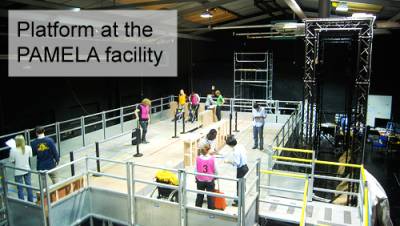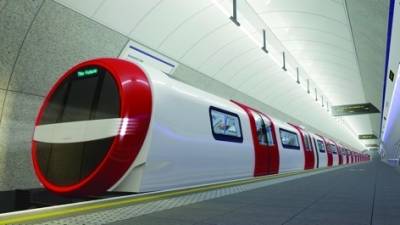Improving transport and access to transport for people with barriers to mobility
Each day, 7.1 million trips are made on London's transport system by people with mobility barriers. UCL research has allowed transport providers to deliver better and more cost-effective services, as well as enhancing users' access to and experience of public transport.
These benefits originate in work conducted by Professor Nick Tyler for the Department of the Environment, Transport and the Regions in the 1990s, which led to the establishment of PAMELA, a real-world-scale laboratory for assessing pedestrian movement

Constructed between 2003 and 2006, the PAMELA laboratory is
a novel and highly flexible facility allowing full-scale pedestrian
infrastructure to be built and tested to enable thorough assessment and
evaluation. The structure includes a flexible floor surface that represents
real ground conditions with interchangeable surface materials and is supported
by a range of sensing equipment.
Research conducted at the PAMELA facility includes work relating to the £3.5bn Thameslink 2000 railway line project. In 2008, Tyler and his team built a life-size train carriage to assess the boarding and alighting performance of the proposed trains, given predicted passenger numbers. 150 participants were recruited and over 11,000 passenger movements were recorded.
The research found that the proposed service frequently would not meet the predicted level of demand and so recommended certain design modifications, such as changes to door widths and the vestibules, to alleviate these problems. In 2011 the House of Lords Select Committee on Science and Technology praised Tyler's practical approach in using realistic scientific facilities, rather than relying on computer models to provide estimates.
In 2008, Tyler's team conducted tests to evaluate potential safety issues on the humped sections of London Underground's platforms. These included assessments of the risk of wheelchairs rolling down the ramps, the likelihood of trains not stopping precisely, and the ease with which visually impaired people could use them. The research showed that platform hump designs could in fact be more flexible than previously thought, allowing Transport for London to make multimillion-pound savings.
Another exciting project carried out at PAMELA in 2012 was for London Underground's New Concept Deep Tube Train Programme, for which PAMELA was commissioned to develop and test a full-size tube train carriage. The results of the trials, which involved 120 participants, have enabled London Underground to incorporate the passenger perspective more fully in taking the concept forward.

The PAMELA team was also involved in the development in
Exhibition Road of a kerb-free, single-surface space shared by pedestrians and
vehicles, as part of a £30 million redevelopment project. Exhibition Road,
which is home to the Natural History Museum, Science Museum, and Victoria &
Albert Museum, is used by some 11 million visitors per annum, and concerns had
been raised by the Guide Dogs for the Blind Association (GDBA) about pedestrian
safety there. Together with Transport for London, the GDBA commissioned the
team to build 54 different designs, which were tested by visually impaired
people, wheelchair users and elderly people. The research findings were cited
in a judicial review of the project and incorporated in the final design.
Through these and other projects, the research at PAMELA has not only improved the welfare and quality of life of the millions of people who use London's transport system, particularly those with mobility barriers, but also enhanced visitor and tourist experiences of London and encouraged wider take-up of London's transport services.
To find out more, contact Catherine Holloway
 Close
Close


